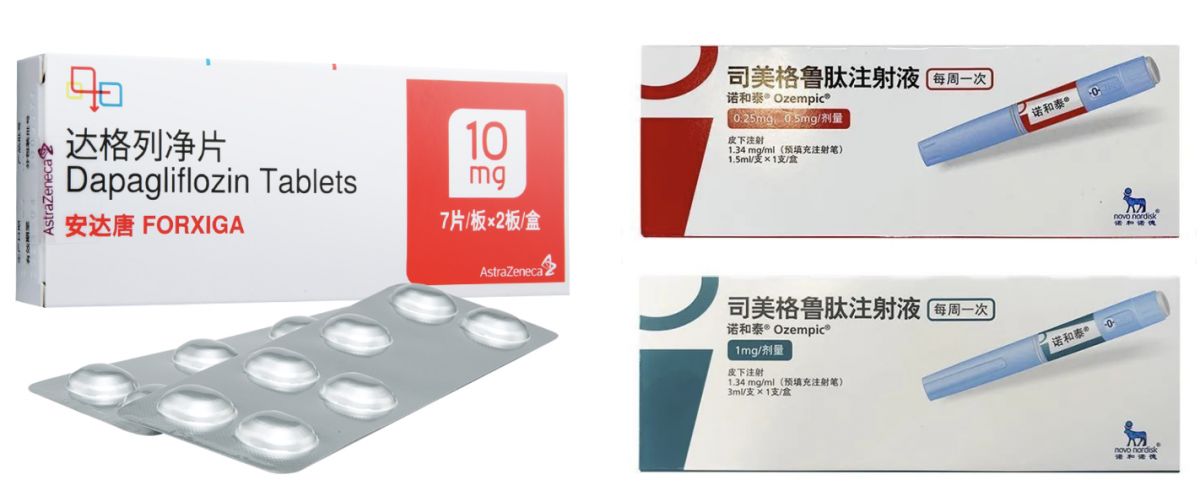新闻资讯
News information
Effect of hypoglycemic drugs on the progression of diabetic retinopathy
backdrop
Diabetic retinopathy (DR) is a microvascular complication of the retina caused by chronic hyperglycemia. Active control of blood sugar helps to inhibit the occurrence and development of DR. Recent studies have shown that some hypoglycemic drugs may have independent protective effects on the retina of diabetic patients, such as: metformin, glucagon-like peptide 1 receptor (GLP-1) agonists and sodium-glucose cotransporter 2 (SGLT-2) inhibitors. This provides a useful reference for DR Patients to choose more appropriate hypoglycemic drugs.

Two new types of drugs, GLP-1 agonists (star product: Simeaglutide) and SGLT-2 inhibitors (representative drugs: Liegen drugs), have attracted more and more attention as first-line options for monotherapy treatment of diabetes. However, a recent large retrospective cohort study published in AJO found that progression to proliferative diabetic retinopathy (PDR) and diabetic macular edema (DME) was faster with GLP-1 agonists than with SGLT-2 inhibitors. And as time went on, the difference seemed to become more pronounced.

His research content is
Methods: We conducted a large retrospective cohort study using de-identified electronic health records of more than 113 million patients aggregated by the TriNetX Health Research Network. A total of 10,298 patients with non-proliferative diabetic retinopathy (NPDR) who received monotherapy with GLP-1 agonists and 6696 patients who received monotherapy with SGLT-2 inhibitors were included. None of these patients had received other hypoglycemic therapy, including insulin, and patients with DME at baseline were included in the study. The researchers then used TriNetx’s built-in analysis platform to match the two groups with propensity scores for baseline characteristics, including index age, sex, ethnicity, race, baseline hemoglobin a1C (HbA1c), baseline body mass index (BMI), presence of type I or type II diabetes, and severity of DR. These patients were analyzed at baseline, at 3 months, 6 months, 1 year and 3 years, and the rate of progression to PDR and the rate of development of DME were compared between the two groups. Result:
The rate of PDR progression was higher in the GLP-1 agonist group at 1 and 3 years after treatment began; The GLP-1 agonist group also had a higher incidence of DME at 3 months, 6 months, 1 year, and 3 years.
Conclusion
A higher rate of PDR progression and risk of new DME were observed in the GLP-1 agonist group compared to the SGLT-2 inhibitor group. Another study from Taiwan also found that the SGLT-2 inhibitor group also had a lower probability of undergoing vitreoretental surgery compared to the GLP-1 agonist group. Previous studies have shown that large, rapid reductions in blood sugar are associated with early deterioration of DR. In this study, patients treated with GLP-1 agonists had a greater decline in HBA1c, supporting the association between large fluctuations in HBA1c and worsening DR.
In actual clinical practice, relevant physicians should be aware of the potential effects of these drugs and fully evaluate the state of the patient’s retina when using novel hypoglycemic drugs to ensure that these patients are properly monitored for early detection of potential vision-threatening complications.
reference
1. Wai KM, Mishra K, Koo E, Ludwig CA, Parikh R, Mruthyunjaya P, Rahimy E. Impact of GLP-1 Agonists and SGLT-2 Inhibitors on Diabetic Retinopathy Progression: An Aggregated Electronic Health Record Data Study. Am J Ophthalmol. 2024 Sep; 265-39-47.
2. Chen Ruoyu, Cao Dan, Zhang Liang. Research progress of drug therapy for diabetic retinopathy [J]. Advances in Ophthalmology,202,42(03):244-248. (in Chinese)
3. Lin TY, Kang EY, Shao SC, Lai EC, Garg SJ, Chen KJ, Kang JH, Wu WC, Lai CC, Hwang YS. Risk of Diabetic Retinopathy between Sodium-Glucose Cotransporter-2 Inhibitors and Glucagon-Like Peptide-1 Receptor Agonists. Diabetes Metab J. 2023 May; 47 (3) : 394-404.
